Pollen Pusher
I’ve come to terms with my small garden and have learned to squeeze from it many months of exuberant color. That colorful profusion has only increased as I’ve transitioned to growing Willamette Valley native annuals. The last couple summers were ruled by a riot of native pollinators visiting these flowers which aren’t anywhere else on the landscape.
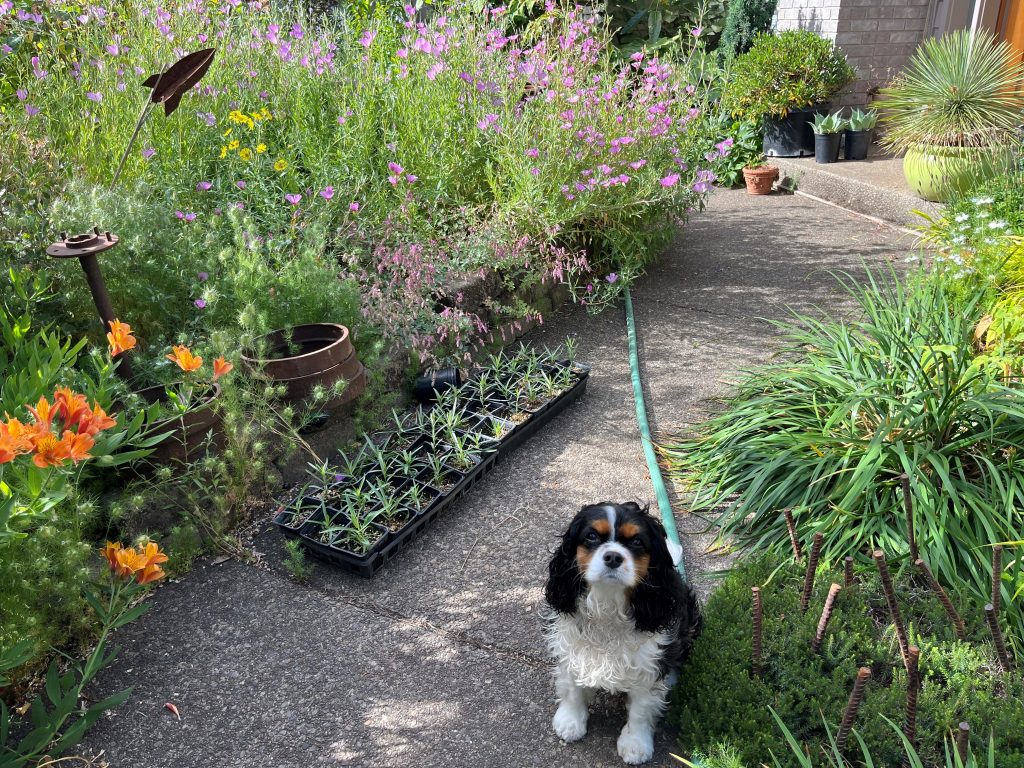
The frequent prairie fires set by the Kalapuya in the Willamette Valley kept the prairies healthy and productive and the Douglas firs away. The oaks were few but grew huge with low and wide spreading crowns. There was ample space for millions of annuals to grow, bloom, and support a whole ecosystem of insects, birds, and other animals. But there’s been a total conversion post-settlement to a new ecosystem. Now it’s an ecosystem defined by monoculture cropping, cities and industry served by vast road networks, and greened by many exotic and nonnative plants. This has had dire impacts on the plants, insects and birds that inhabited the prairies. It feels good growing a lot of flowers visited by native insects on my urban lot. My garden is a living demonstration to my community about a different way to garden.
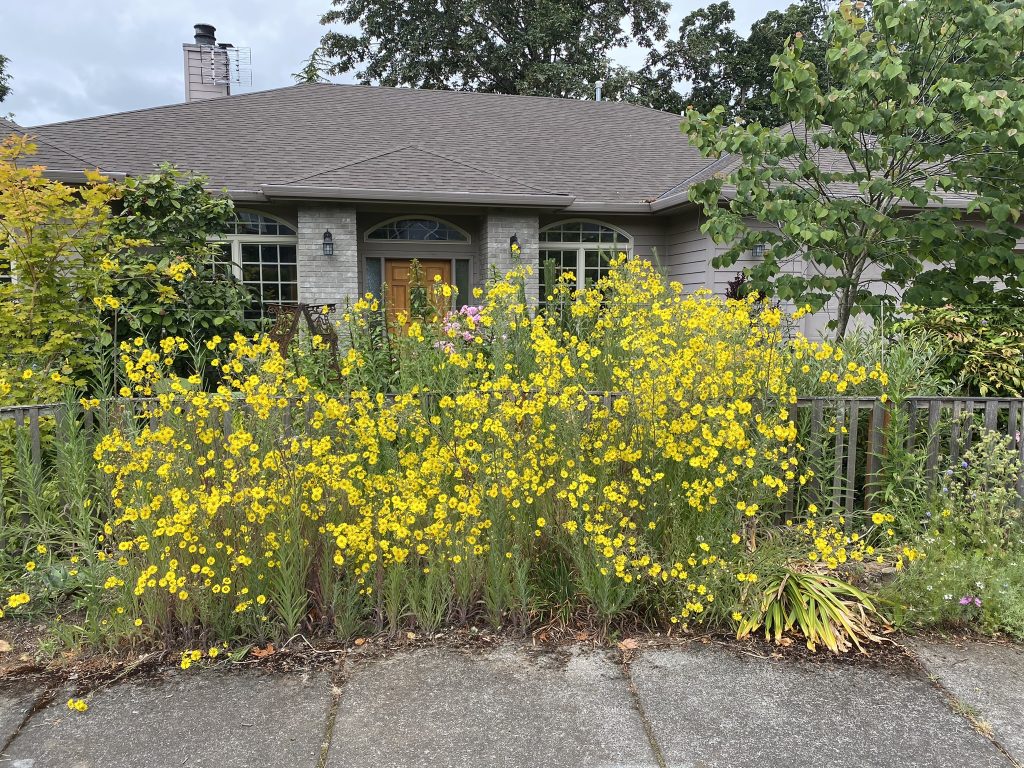
Shrubs and small trees provide a lot of structure in my garden, but they are out shone by the annuals I’ve focused my attention on. Colorful petals, puffy pollen, and sweet nectar fill my garden. Call me a pollen-pusher.
It’s been an easy process – native annuals are completely tolerant of all the weather that comes their way. I thought the two-inch-tall clarkia, Clarkia amoena, seedlings would die out completely this winter when it was 14F for three nights. But the only damage they had was where my dog walked on them, breaking their frozen stems; that is a truly hardy annual! The first of my self-sown annuals, rosy plectris, Plectritis congesta opens fragrant pink flowers in April. The sweet fragrance greets us when we step into the garden. It’s overlapped by the blue and white flowers of large flowered blue-eyed Mary, Collinsia grandiflora. And before that’s done the bluehead gilia, Gilia capitata, and tarweed, Madia elegans start.
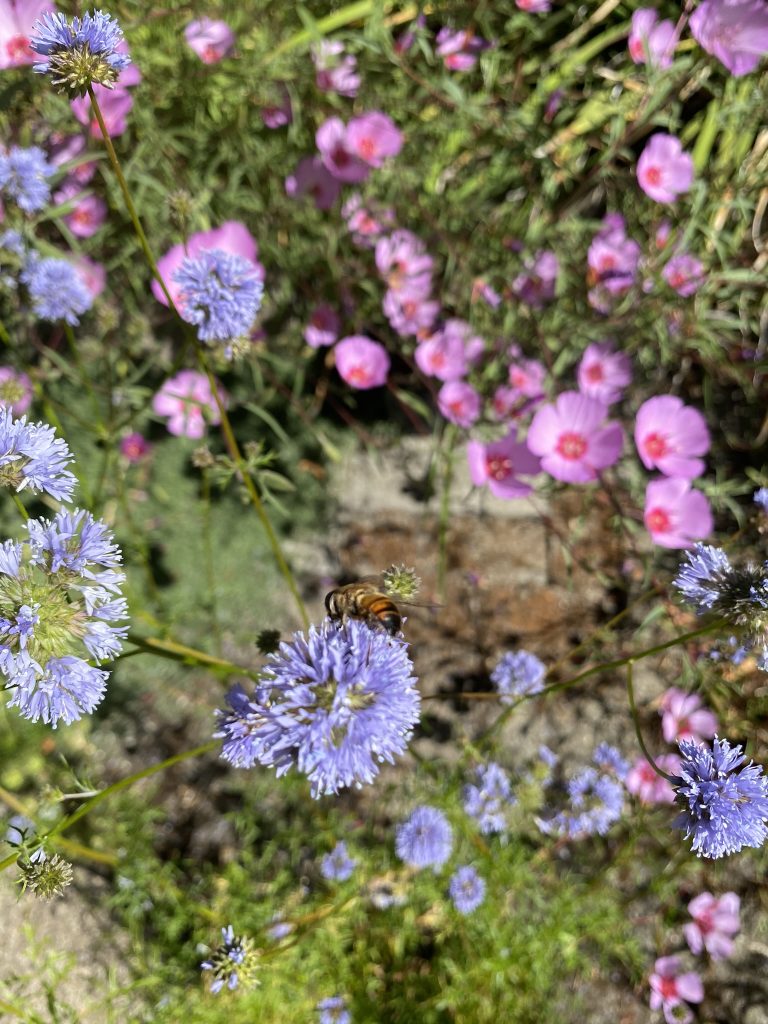
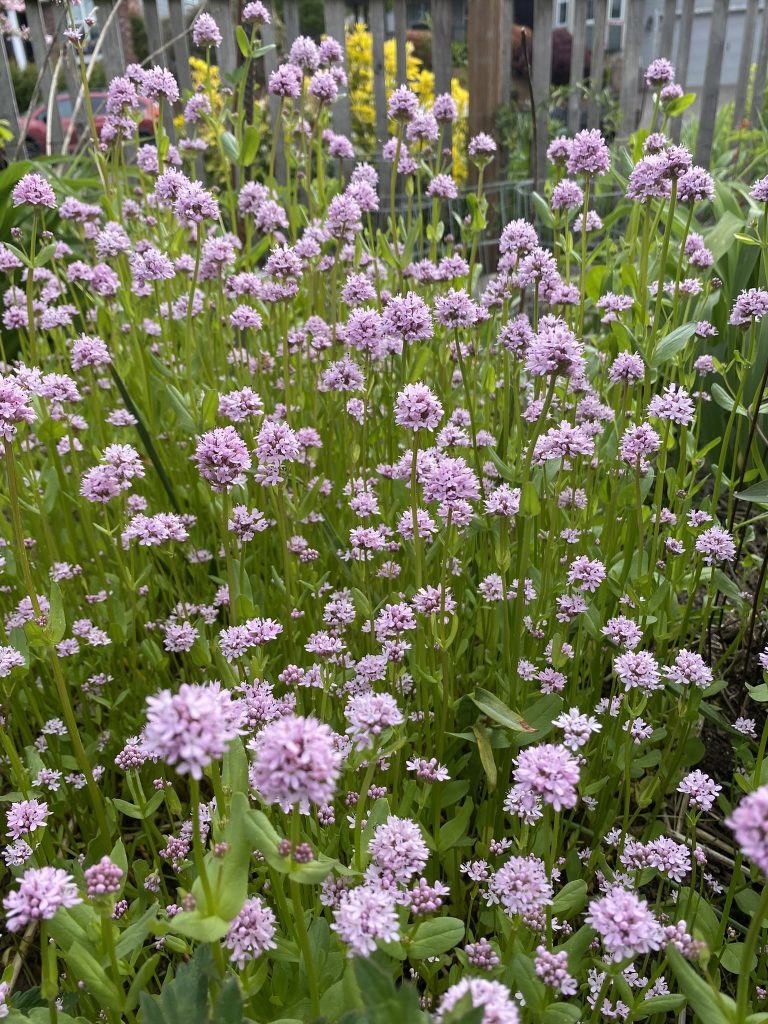
I start with bare dirt and scattered seeds in October. My luck isn’t so good doing this in the spring. My guerilla gardening project, which relied on spring-scattered seeds, on a seed to flower comparison is expensive. I’m optimistic the bluehead gilia and tarweed will reseed this autumn where I got them started.
Native annuals germinate rapidly with autumn rain and are winter hardy. This early establishment helps them endure a dry summer with ease. It’s one of the best things about this flower garden; it doesn’t require any irrigation. I do use slug bait and a deer fence to control predation because neither of those species need my help succeeding in Silverton. Last fall I didn’t thin any of the seedlings which grew thick. Most species were a dense carpet, and I thought there might be trouble with damping off fungus, but it wasn’t a problem for any of the species. My meadow of tarweed stands tall, waving golden flowers in the wind and bowing in soft rain, but it returns upright even though it’s five to seven feet tall. Its height is because my garden’s soil is rich. If I’m being honest with you, the clarkia did lodge sometime in May, but responded to the bent stems with so much more growth. I think, now there are more cheery pink flowers because it toppled a bit. And more clarkia blooms are always a good thing because the leaf-cutter bees visit and cut out discs from the petals for their nests. Grubbing out dense seedlings will help keep the plants shorter. If you’re uncertain you’ll succeed with direct sowing, sow in seeds trays. I’ve had good luck doing this outdoors in February or early March and transplanting as soon as I could handle them. If you have a greenhouse, the process is faster. Transplanting leads to short plants, and they bloom a little later – not a bad thing.
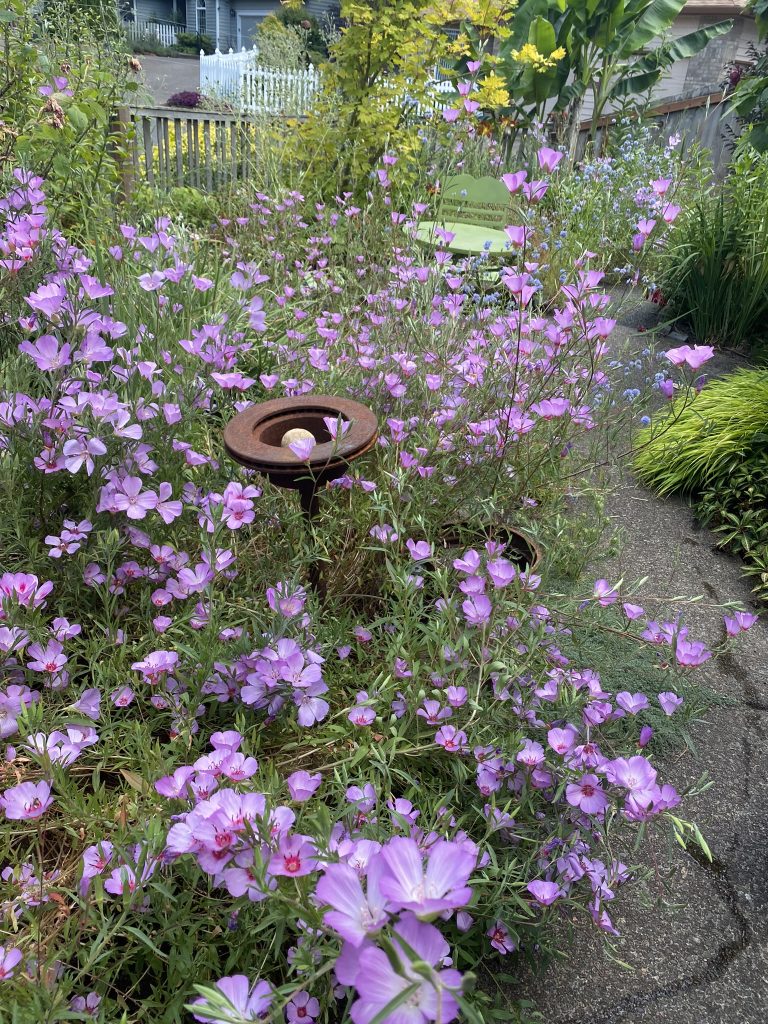
The three summer blooming annuals do the real work in my garden. Tarweed starts blooming in mid-May and stay strong through July. Bluehead gilia has always been reliable to bloom over the Forth-of-July. With round balls of small blue flowers launching skyward from thin stems, it’s the Willamette Valley’s most patriotic annual. Clarkia, farewell-to-spring could be named welcome-to-summer – another reason I don’t like common names. It explodes into a riot of pink flowers in celebration of the longest day of the year in June continuing into August.
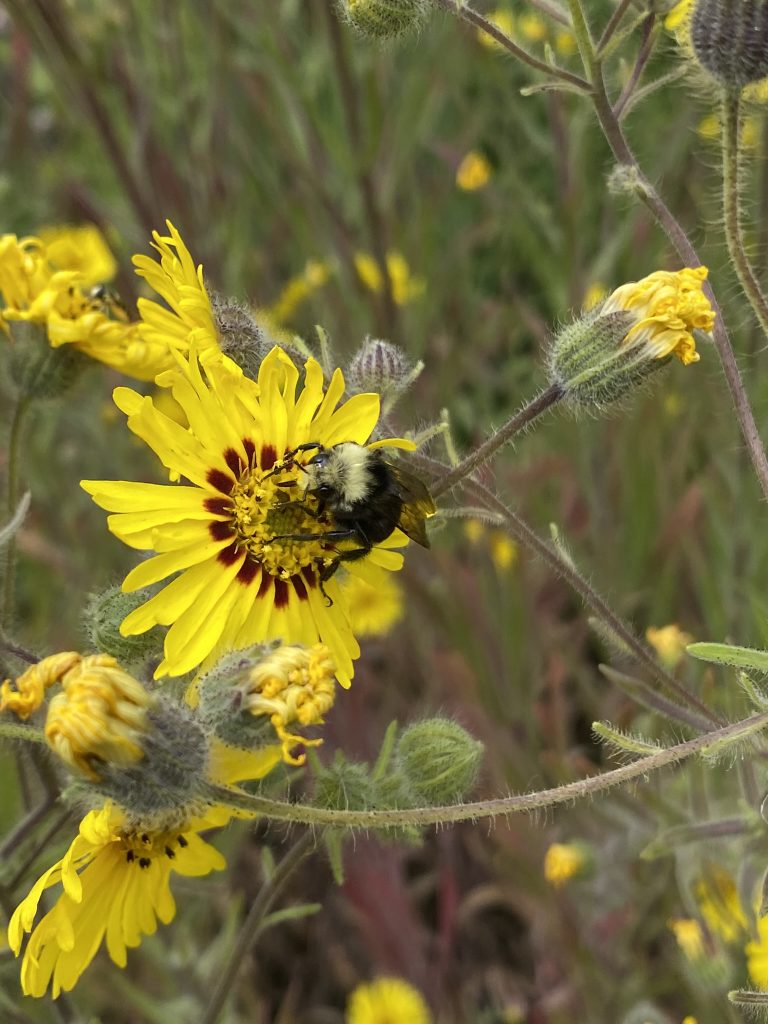
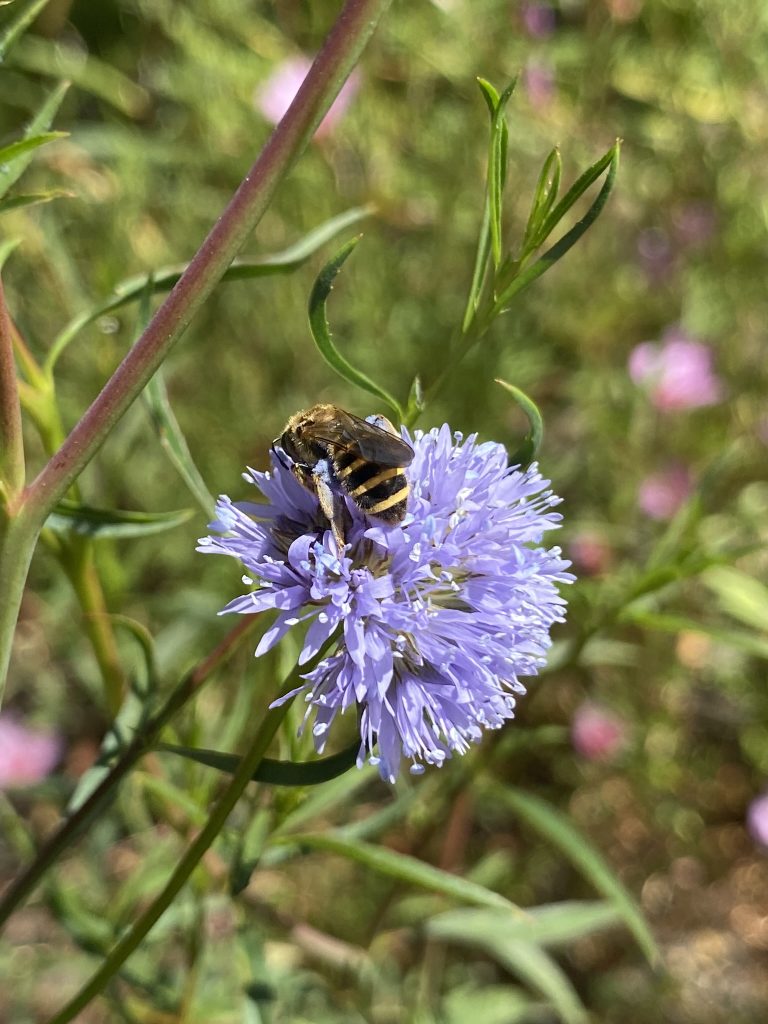
I collect a lot of seeds from each of these, storing it in paper grocery sacks and winnowing it on breezy days. I use this collected seed to share with friends and to resow in my garden. But most of the stems I just leave. Because I grow the plants in patches it’s straightforward dealing with aesthetics. Knock down areas that are unattractive, leaving the stems on the ground to feed the soil and insects.
These annuals I’ve mentioned host more pollinator activity than I’ve ever experienced in my garden. They throb with a great diversity of winged life. On the tarweed or clarkia, I see more diversity in pollinators than I’ll see visiting the rest of my garden flowers combined. Hosting pollinators like this makes me feel good about the garden I’m growing.
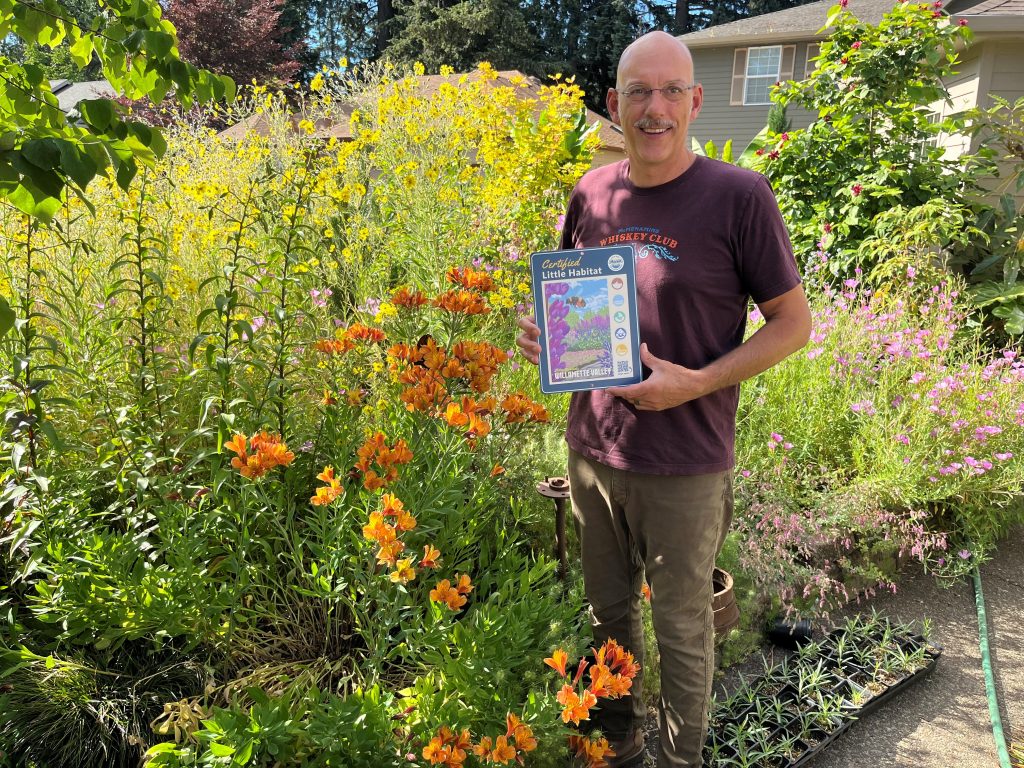
Resources
About the Author

About the Author
Eric Hammond is an ISA certified arborist and horticulturist with 30 years’ experience. In 2023, Eric launched OAKtober with Sustainable Silverton.
